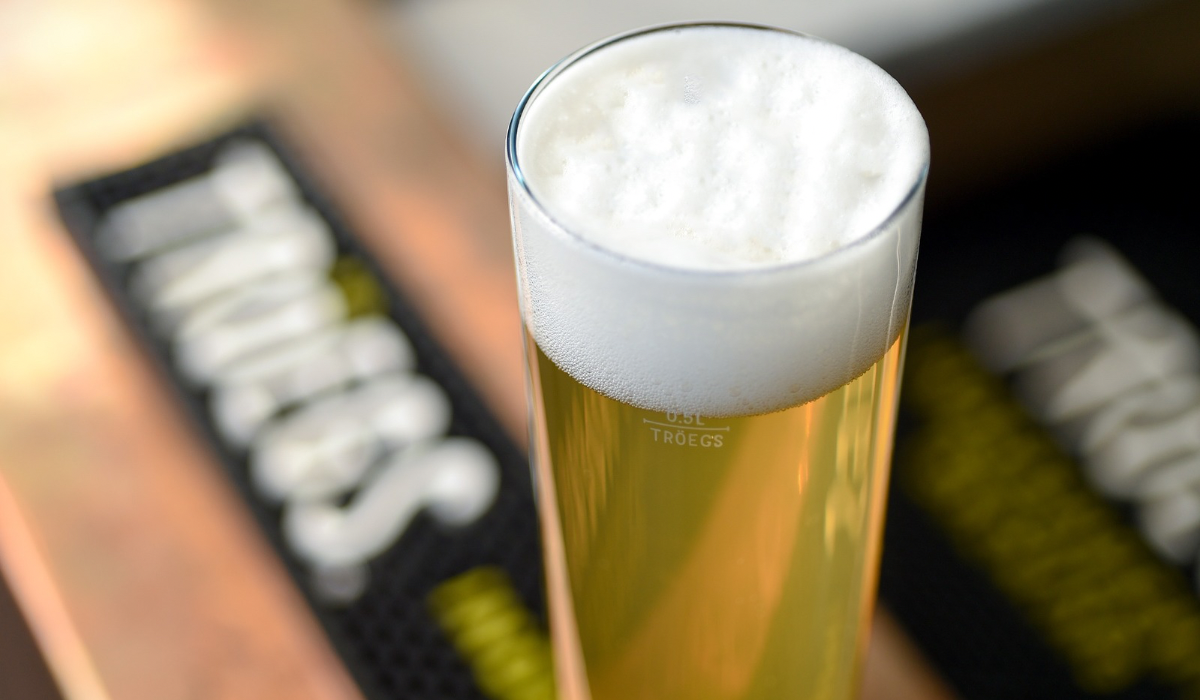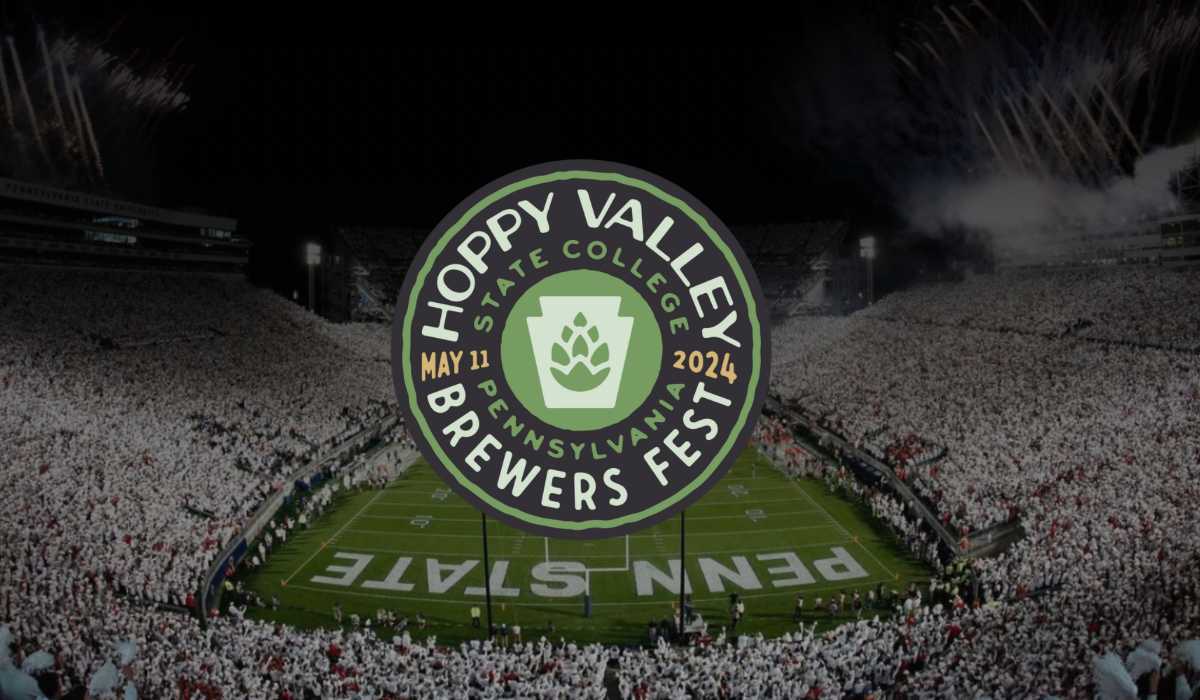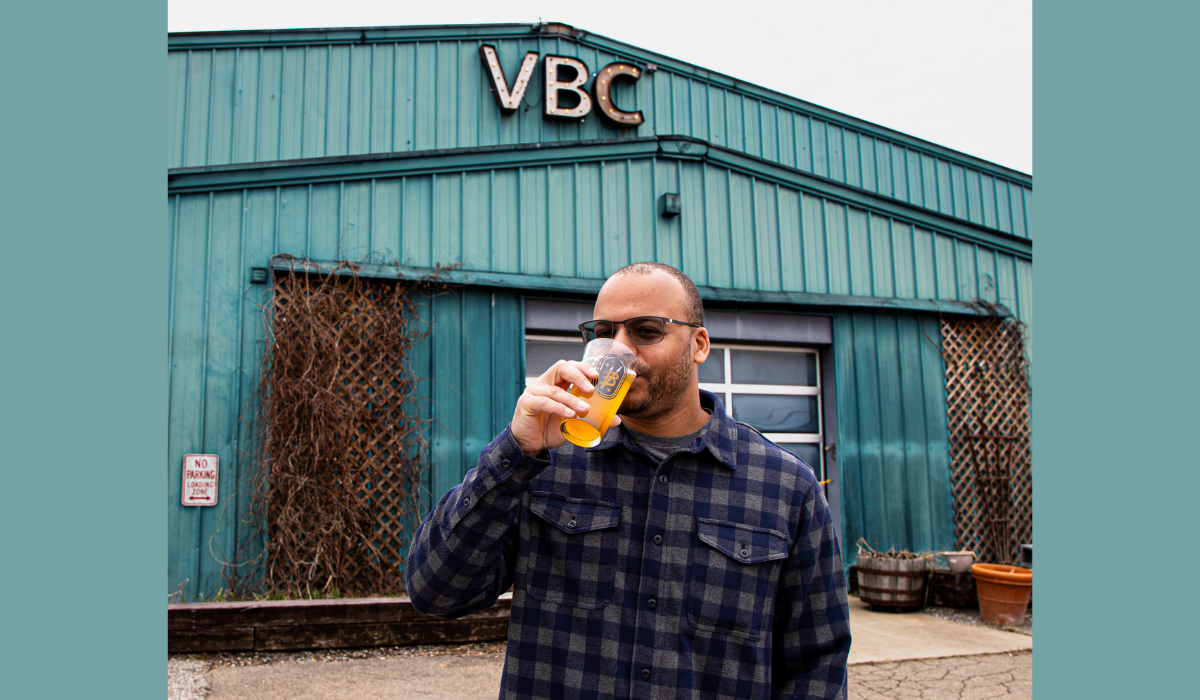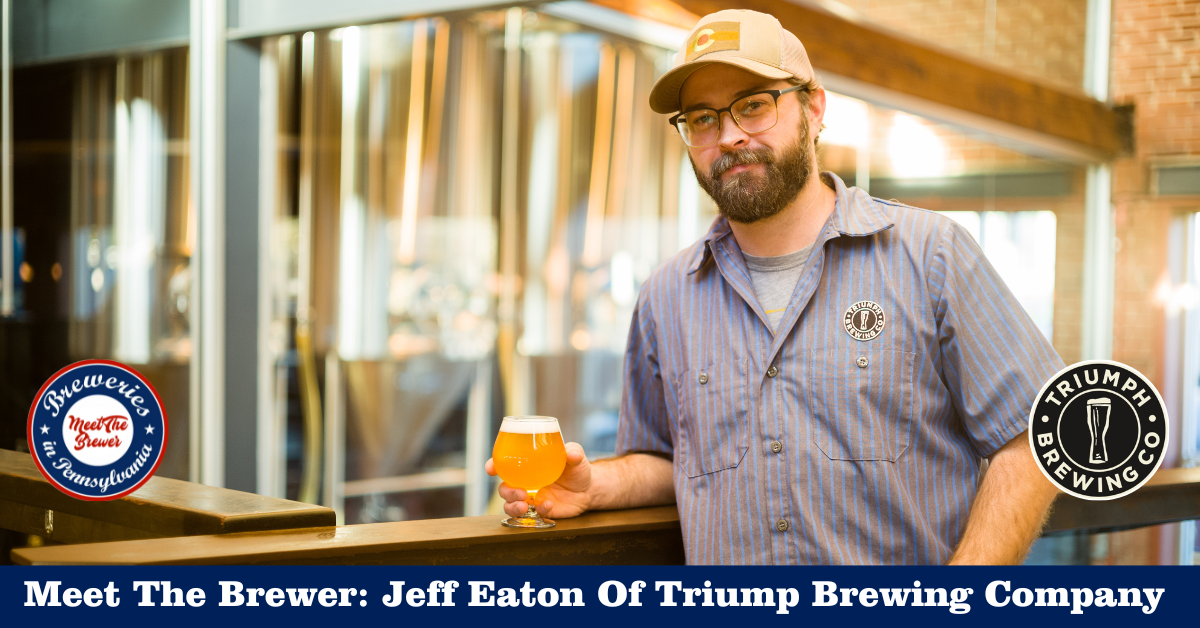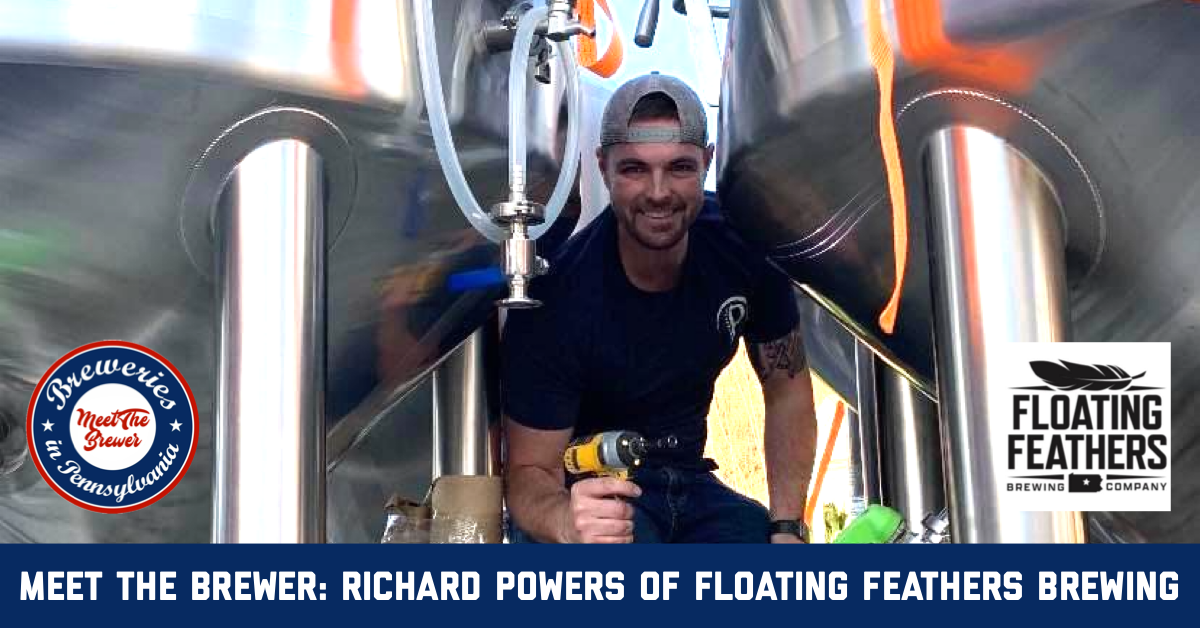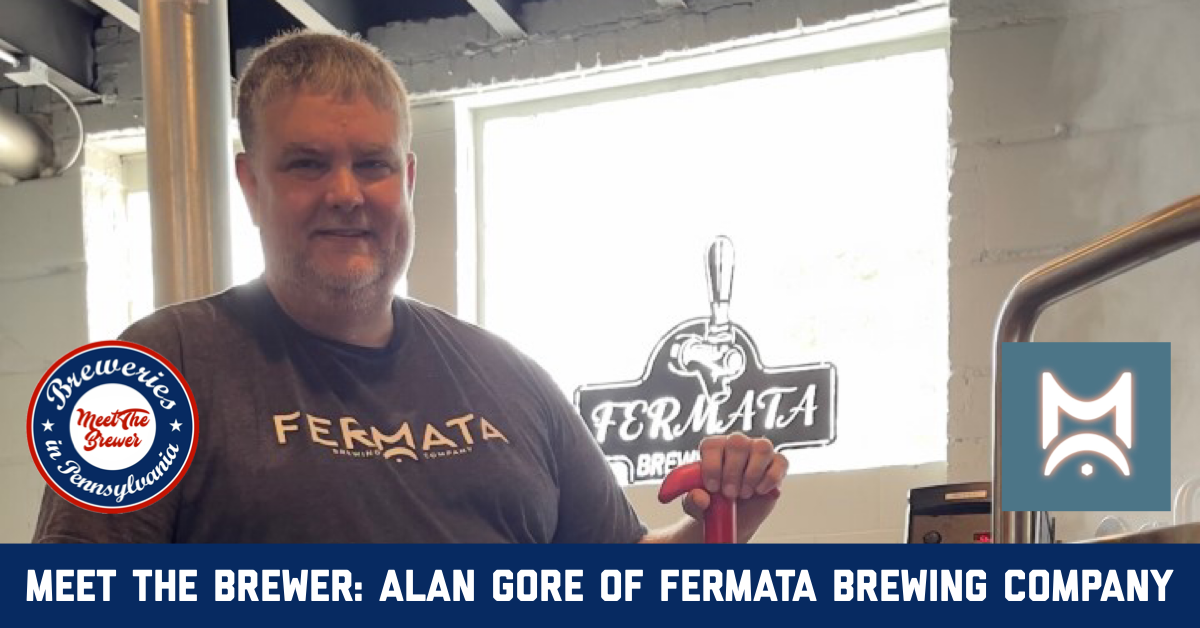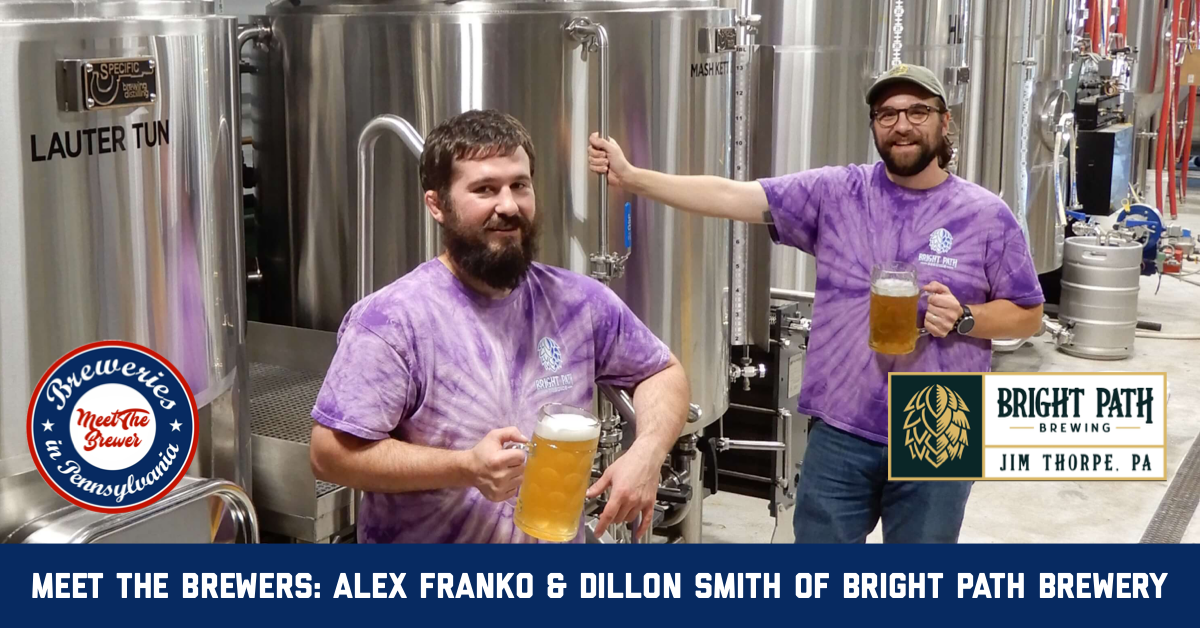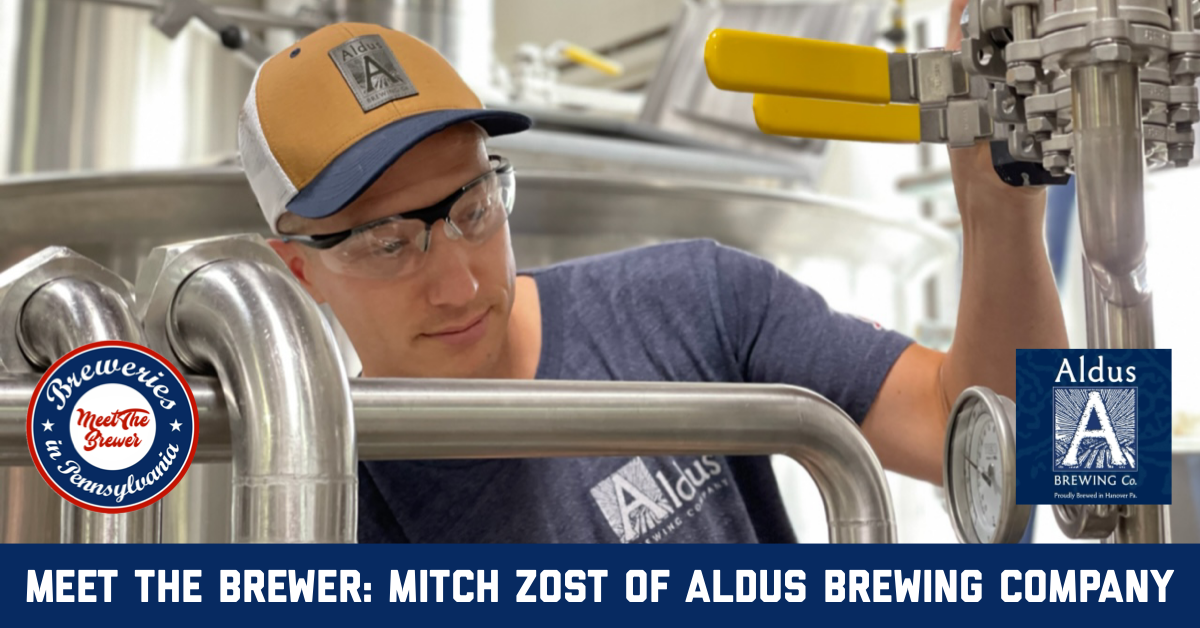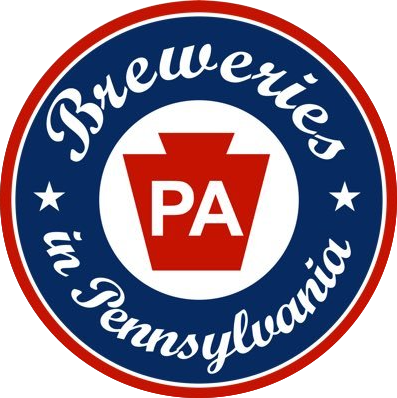Welcome to our “Meet The Brewer” series! Where we interview brewers in Pennsylvania, from breweries small to large. Let us know if you know anyone who should be featured, email us at [email protected].
Stick City Brewing (Mars, PA) opened in April 2018, with its name stemming from the rural location the family took camping trips to (and still does!) in Cabot, PA. With a hand carved bar and tables made out of tree roots, this is a brewery you feel right at home at. Stick City offers 8 taps of delicious beer with a wide variety for anyone and everyone. Stick City Brewing Company is also the first craft brewery in Pennsylvania to join the 1% for the Planet movement.
Nick Salkeld is the head brewer of Stick City Brewing. Learn more about Nick, including where he sees the industry heading, the first beer he ever brewed, his favorite beer, and MORE!
What was your introduction to craft beer?
My introduction to craft beer was during my freshman year of college at Montana State. Three beers laid the groundwork: Sierra Nevada Pale Ale, New Castle Brown Ale, Big Sky Moose Drool Brown Ale. It was a perfect avenue into the flavors of malt and hops.
How did you get started as a brewer?
My dad introduced me to brewing when I was about 8 years old. He started homebrewing in the early 1990s doing partial mash brews. I’ll never forget how new the smell of boiling wort was to me and my siblings. It wasn’t until 2009 that my brother and I asked dad to break out the old equipment to start brewing again. Our first brew together was an Imperial IPA – big, malty, bitter, easily pushing 9% ABV. From that point, we upgraded to a 5-gallon all-grain, fly sparge, two-cooler brew system and I took the helm of creating recipes and refining the process.
What style allows you to be the most creative, and why?
Currently, I am finding a lot of creativity diving deeply into simple beer styles. Pilsner and low ABV Bitter in particular. A deep dive into and the adjustments made to the water, the grains, the hops, and the yeast – how they all interact with each other. This is done for all beers made at Stick City; however, it is the lower ABV, simpler styles where the creativity lands for me – it is almost philosophical. The goal for me with these beers is to not just make a great pilsner, for example, it is to create one that differentiates itself as being remarkably different in the right ways. Noticeable, but hard to put your finger on exactly why. All to lead to a simple beer that contains interesting complexity and depth in the appearance, flavor, aroma, and mouthfeel of the beer. This is what has been satisfying my creative side for the past few months now.
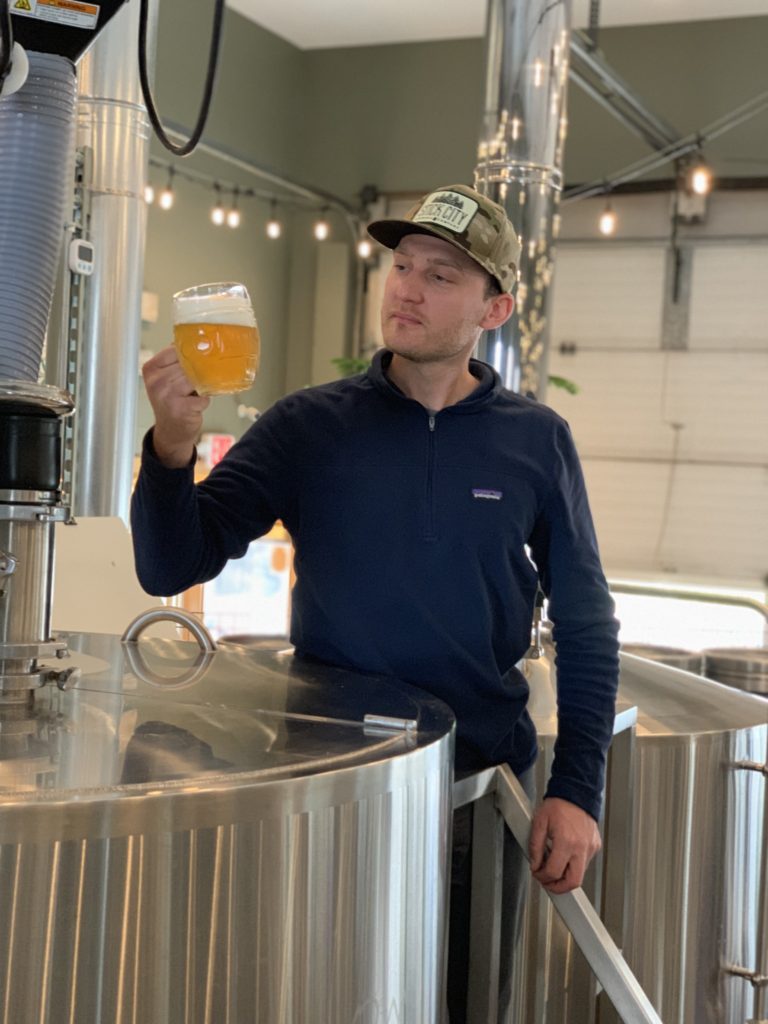
What was the first beer you ever brewed, and what did you learn from it?
Other than the partial mash Imperial IPA I made with my dad and brother; I would have to say it was an all-grain Bells Two Hearted clone that I would credit as the first beer “I brewed.” It was a clone recipe from an older issue of Brew Your Own magazine, when Two Hearted was in the 6% ABV range and not called IPA. That’s what is sticking out in mind. At the time, I learned that there was more to brewing than just assembling the correct ingredients and ending up with a great beer. The taste of that beer, while using the same ingredients as Bell’s Two Hearted, did not taste like Bell’s Two Hearted. And so, started the journey of asking myself “why?” a lot.
Where do you see the craft beer industry heading in the next few years?
I see it continuing it’s shift towards the classic local bakery model. A town’s local brewery is where one goes for their fix of fresh beer. I see an increasingly educated palate from the beer drinker, which will only get better and preferences will change – which is good for everyone involved. I also hope that I am correct in seeing that more people from diverse backgrounds are approaching beer for the first time, increasing the market size overall. There really is a beer for everyone out there now that can start them on a journey of discovering beer.
Describe what it’s like to be a brewer in Pennsylvania.
It’s a great feeling to be a brewer in Pennsylvania. Especially here in Western PA where we are located, just about every brewery is creating high quality and flavorful beers. It keeps you honest and constantly working to improve – not to compete, rather to continue the respect for what has been created here: great breweries, created and operated by local folks, making highly drinkable beer.
What is the inspiration behind your beer names?
Other than a few outliers, many of the beer names come from outdoor, local flora and fauna, fly fishing focused themes primarily specific to Pennsylvania. We have beers named after PA state symbols, like the Brook Trout (Fontinalis, Pale Ale), the Ruffed Grouse (Umbellus, Stout), the Eastern Hemlock Spruce (Tsuga, DIPA), the Mountain Laurel (Latifolia, IPA). We also have some fun with Mars-related themes since we are located in Mars, PA. See how many little aliens you can find during your next visit to Stick City, they are everywhere.
What is your favorite beer to drink right now?
Right now: true Czech Pilsner. In particular, Únětické Pivo 12°. Some beers just need a double-decoction and Saaz hops to be right – this one nails it.
What is the most important lesson you learned in the beer industry so far?
That the beer industry as whole is unpredictably dynamic and that changes happen quickly. The lesson for me is to be cognizant and aware, but to not overreact. I guess this lesson is applicable to life as well!
Thank you to Nick Salkeld for talking with us!Make sure you visit Stick City Brewing Company for all the latest beers, news, information and special events. And also follow Stick City on Facebook, Instagram, and Twitter!






